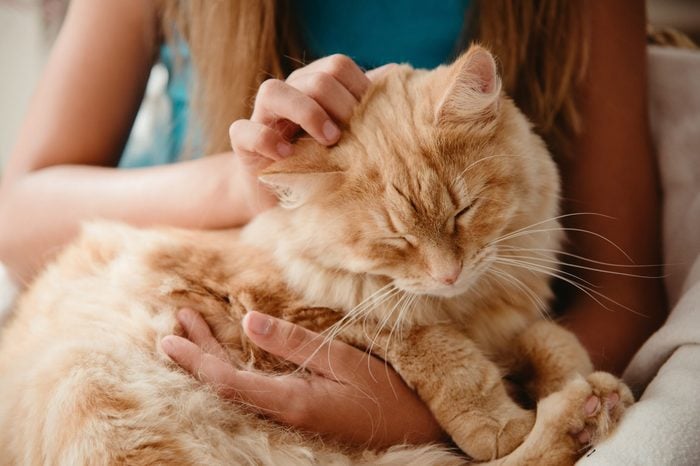
What are you doing wrong?
You try your best to keep your cat happy with lots of love, playtime, and treats. But is it working? Could some of your well-meaning attention actually be making your cat anxious, annoyed, or standoffish? We asked experts in cat behavior to explain some of the ways people inadvertently irritate their feline friends. Find out the reason behind one of your kitty’s favorite behaviors: cat naps.
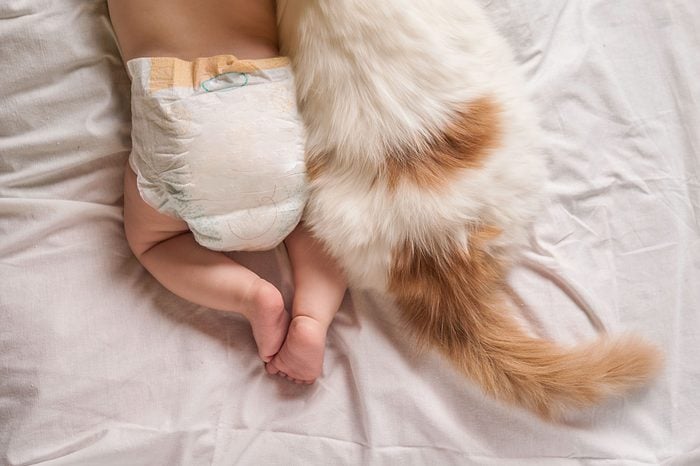
Babies
You’ll love your new baby, and you’ll love your cat, but don’t necessarily expect them to love each other, at least right away—even if your cat does like baby talk. “Big life changes such as moving or welcoming a new family member can be stressful for cats,” Kristyn Vitale, a postdoctoral researcher at Oregon State University, in the Human-Animal Interaction Lab says. The ASPCA website offers tips for helping cats get used to the idea of sharing their homes with a small human, including playing baby sounds before you give birth to get your kitty accustomed to what’s coming. If dad will be taking over cat care from mom once the baby arrives, have him take on his grooming and play duties at least a month before the big day. Here’s why cats meow.
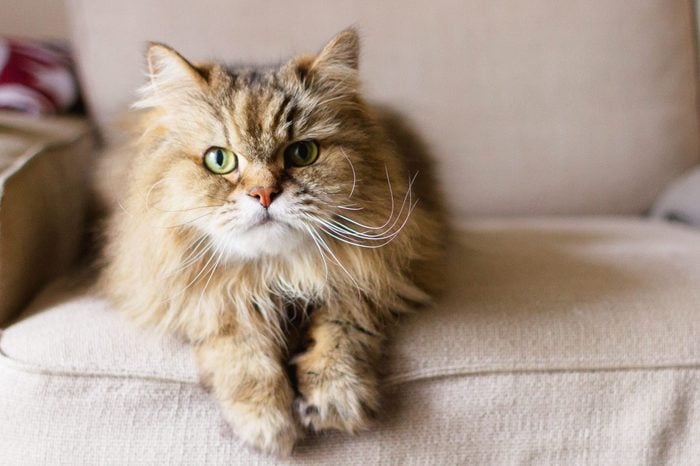
Change
If a new baby is one of the most dramatic lifestyle changes that will stress out a cat, it’s not the only one that should be undertaken gradually when possible. Even moving a cat’s litter box should be done slowly if at all possible—the ASPCA recommends scooting it just a few inches per day toward its new location. If you have to move to a new house or apartment altogether, your worries will be bigger: Marilyn Krieger, Catster’s “Ask a Behaviorist” columnist, writes that the biggest concern is safety since anxious cats are more likely to run away or hide in inappropriate places. She recommends a detailed safety check of the new home to ensure there aren’t any loose screens. Speaking of anxious cats, have you wondered about the YouTube videos that show them jumping away from cucumbers? Read about possible explanations for this behavior.
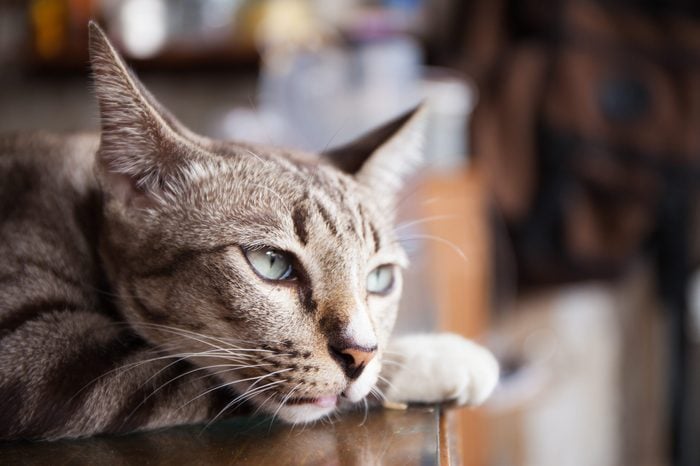
Boredom
Big changes might be stressful for cats, but they don’t actually want every day to be exactly like the last. “Having a home environment that never changes can also be boring for cats,” Vitale says. Plus, when they’re not accustomed to any day-to-day variety, they’ll be extra-freaked-out when your grandparents visit or a plumber comes to work on your kitchen sink. “Giving your cat new interactive toys and forms of enrichment can help stimulate their mind and may also make them more comfortable with new situations when big life changes do occur.” Check out these 12 telltale signs that your cat is happy.
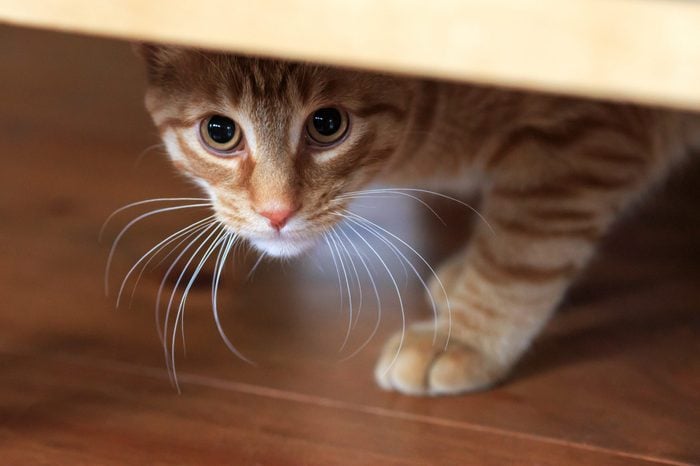
Loud noises
Fireworks, thunderstorms, and construction noises can be confusing and scary for pets. The best remedy, says Vitale, is distraction. She suggests training your cat to sit and stay in a specific location, like on a mat, and then practicing the behavior when the loud noises startup. Vitale’s instructional video shows how she teaches the behavior. “After the cat is a master of sitting and staying then have them do this when loud noises are occurring,” she says. “Give them treats for engaging in the sit/stay behavior and for ignoring the loud noises. Eventually, they will learn the loud noises are nothing to be afraid of, and they will be more interested in earning treats than hiding.” Here’s why cats hate water so much.
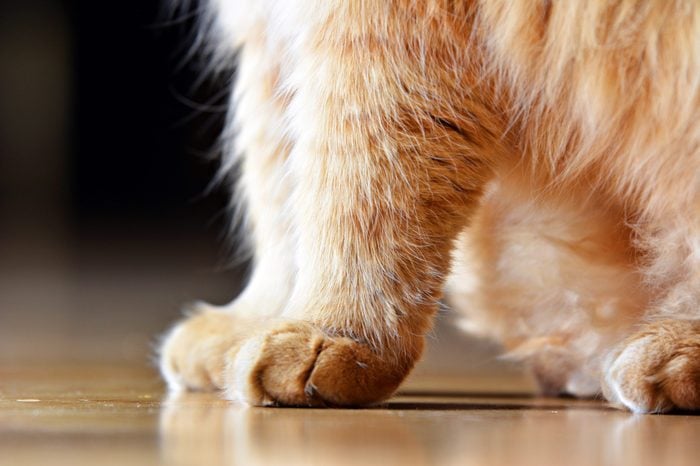
Certain textures
Because cats are so particular, you can take advantage of their sensitivities to help guide their behavior. According to the website for the MSPCA-Angell, a nonprofit animal protection organization in Boston, most cats hate walking on aluminum foil, heavy plastic, or sticky surfaces, so if you want your cat to stop hanging out on the counter, make sure the surface is unwelcoming. Vitale adds that a product called Sticky Paws can make your dining room table less inviting to your pet. “Make sure to reward times the cat is on the floor and not on those surfaces with treats and praise,” she says.
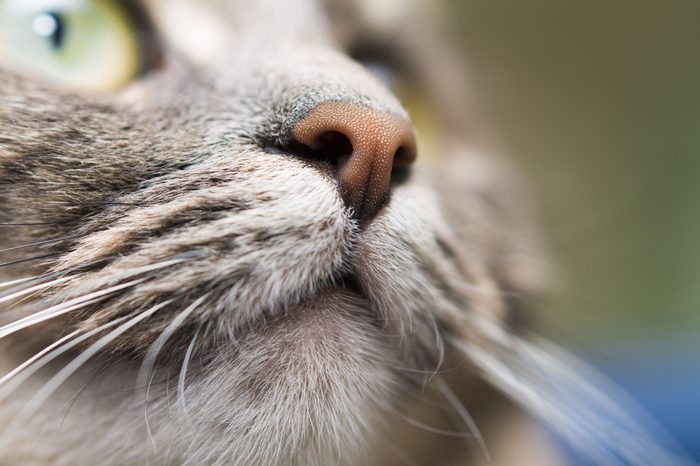
Strong smells
Does your cat seem to give you a wide berth when you’re wearing your favorite perfume? “They have excellent noses,” Vitale says. “Scent items with a strong odor, such as perfume or deodorizers, may be off-putting and cats may avoid locations with these scents.” She adds that there are also smells that most cats really like, including catnip, lavender, and silver vine: “You can also use scents cats enjoy to attract them to locations like their scratching post.” For more insight into your cat’s feelings, read about what its different meows, purrs, and hisses mean.

Clothes
Halloween costumes and Christmas hats can be fun for people, but lots of cats will be totally annoyed if you try to dress them up. If, for some reason, you really want Fifi to wear a special outfit for your family photo, Vitale says you should get her used to the idea slowly. “Work up to the cat wearing the clothing by first just putting treats on the item, so they associate it with something good,” she says. As a next step, Vitale suggests putting the clothing on the at for just a minute or two, while offering plenty of treats and praise. “Slowly work up to the clothing being on the cat for longer and longer,” she says. If you’re worried that your cat is still holding a grudge, take a look at these 15 signs he or she is mad at you.
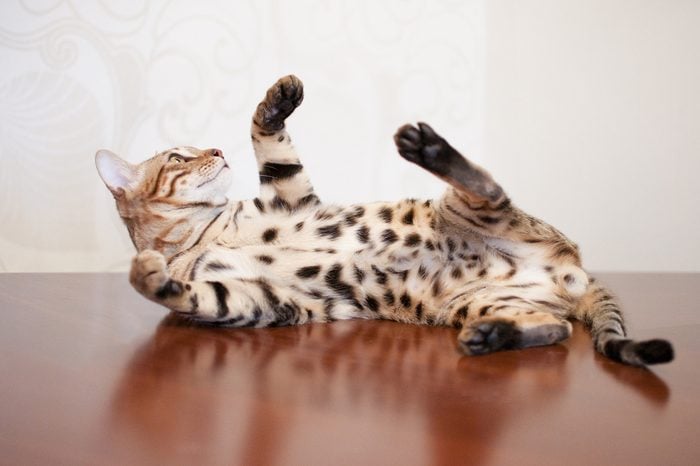
Tummy rubs
Petting on the belly is generally not welcomed: “Most cats don’t like to be stroked on their tummies,” says animal behavior researcher Dennis C. Turner, who edited what’s considered the “cat bible,” The Domestic Cat: The Biology of its Behaviour. You probably never realized that cats don’t like being rubbed on their bellies—just like you never knew these 17 things about cats. How can you tell? “They will (try to) depart the scene or hit you with one of the front paws (with claws extended!),” he says, or they might bite (Turner emphasizes that cat bites need to be thoroughly disinfected). Then again, different cats have different preferences, says Kristyn Vitale, a postdoctoral researcher at Oregon State University, in the Human-Animal Interaction Lab. “Other cats love when a person pets their belly.” Just be ready to back off if the cat gets annoyed.
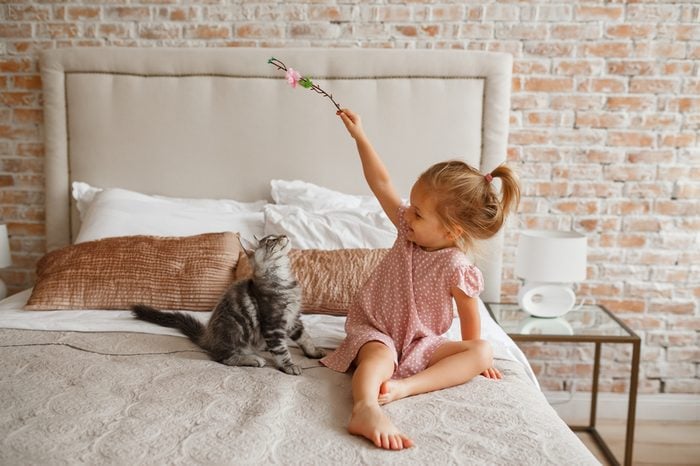
Interacting with strangers
Paying attention to your cat’s reactions is also important when an unfamiliar person wants to pet him—especially if that person is a child or someone who hasn’t spent much time around cats. “One way to see if the cat is amicable to being pet after just meeting them is to let the cat sniff your hand and then watch how they behave,” Vitale says. “If they want to interact they will most likely approach you and engage in social behavior after sniffing you, such as rubbing on you or trying to sit with you.” She adds that if they don’t want to interact, they’ll usually walk away or ignore you, in which case it’s best to let them have their space.
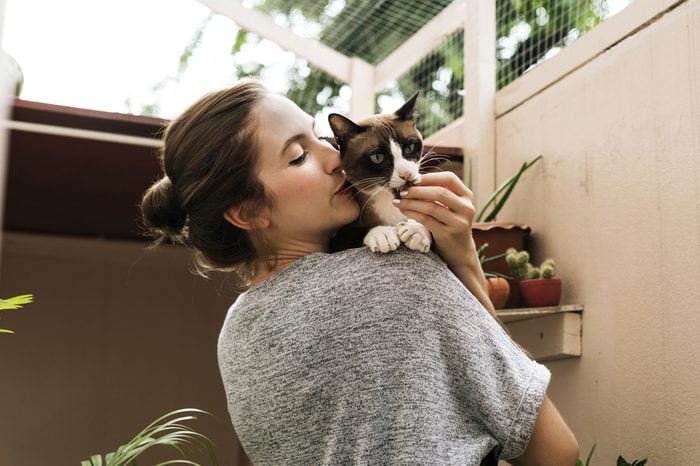
Being picked up
“They certainly don’t like being held against their will,” Turner says. He adds that most cats will forgive you for coming on too strong from time to time if they’re used to socializing with people and they trust you: “My research has shown that they accept most advances by their keepers, giving us the impression that we are in charge.” But, he adds, for the sake of your long-term human-cat relationship, it’s always better to wait until the cat comes to you for attention. “Then there’s more time interacting in the relationship.”
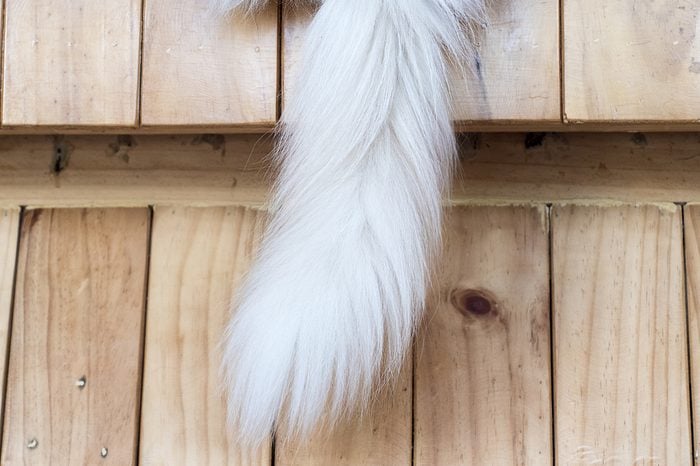
Having their tails held
For little kids, a cat’s tail can look like a very tempting handhold—but don’t let them grab it! Turner says cats really dislike having their tails held or pulled, just like these 50 other things that make your pet tick. Instead, show the child how to let the cat sniff his or her hand, and if all goes well, to pet them in their favorite places: “If they’ve been socialized to people as kittens, then they usually like being tickled around their necks or stroked down the back,” Turner says. Make sure kids are watching for signs that the cat is unhappy, says Vitale: “If a cat does not like the interaction they are receiving, the cat may have dilated pupils, a rapid, fast twitching tail, ears that are flat against their head, fur that stands up on its ends, and may make hissing or growl vocalizations.”
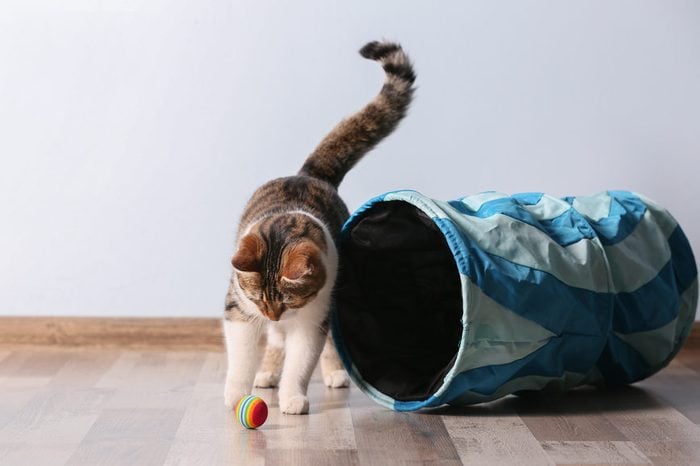
Being left alone
Dogs aren’t the only pets that get lonely and bored when you spend the whole day at work. Vitale advises cat owners to give their pets food puzzles when they’re alone—they’ll be too busy solving problems for snacks to miss you much. She also recommends providing a variety of toys and a protected outdoor space (sometimes known as a catio or a window perch). Some people even consider a second cat. “Although not all cats will do well with another cat, many will readily accept a companion given a proper introduction,” Vitale says. “A new owner could also consider adopting sibling kittens or cats, which may already have a well-established social relationship.”
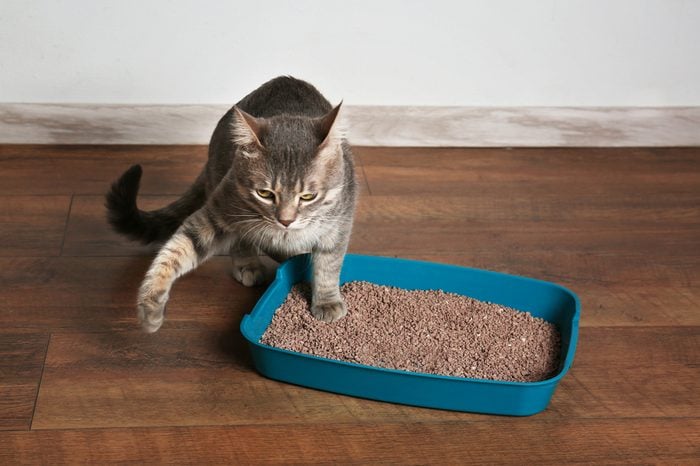
Not enough litter boxes
Is your kitty doing her business in the wrong spots? You may be making one of these 12 dangerous cat-owner mistakes. Most likely, your cat feels there’s not enough of her smell around your house. Vitale suggests having more litter boxes: “Cats are typically more relaxed and secure in areas that have their scent,” she says. “Usually, the rule is you want at least one litter box per cat plus an extra, although some cats may need more than this.” She says to spread the boxes around the house, and she advises choosing unscented cat litter and cleaning the boxes with unscented products, so no chemical smells keep your cat from being able to adequately detect her own fragrance.
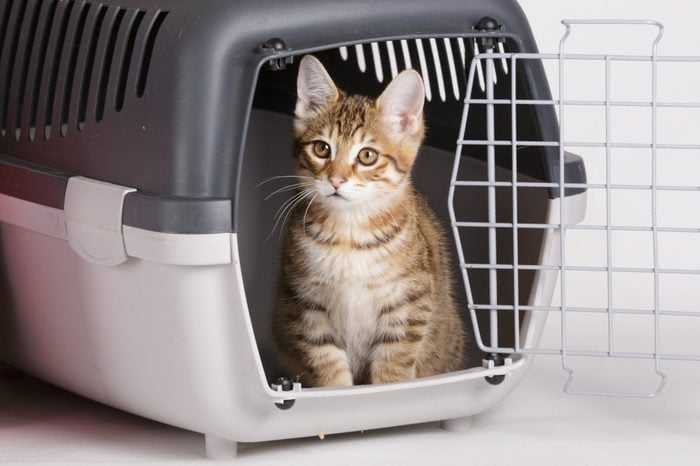
Cat carriers
It’s no news flash that most cats hate going into a carrier. But it’s not the box itself that’s the problem—it’s the veterinarian they usually have to visit when they get closed up in there. Vitale says that, with some work, you can change their negative associations with more positive ones. For starters, “leave the carrier out with a blanket inside so the cat can explore the carrier and even sit in it at times where the cat is just relaxing at home,” she says. You can put treats and catnip inside too. Once he ventures in there on his own, praise him and give him more treats. If he gets comfortable, try shutting the door for a minute—and then opening it and dispensing even more goodies.
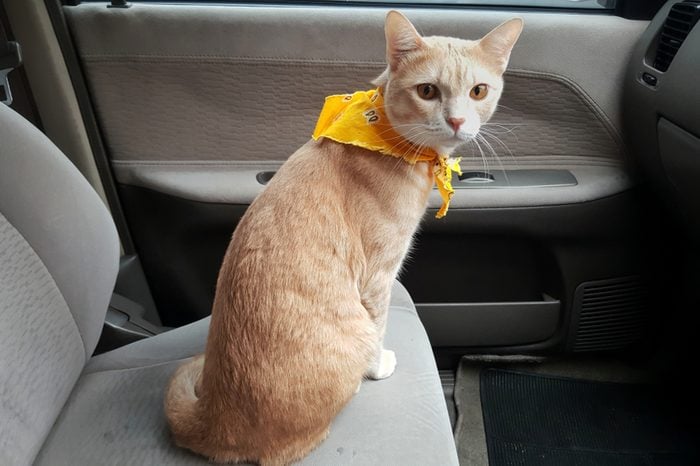
Riding in cars
Carriers and car rides usually go together, but the good news is that some cats can be desensitized to cars too. “One thing owners can do is to take their cat for rides around the neighborhood, while praising the cat for doing a good job,” Vitale says. She suggests keeping it very short at first (maybe five minutes) and—yes—giving lots of treats, petting and play (whatever your cat loves most) when you get home. If your cat seems to be getting more comfortable, make the rides a little longer. If your cat appears consistently angry—even when they’re not in the car—this may be one of the many signs of a depressed cat.
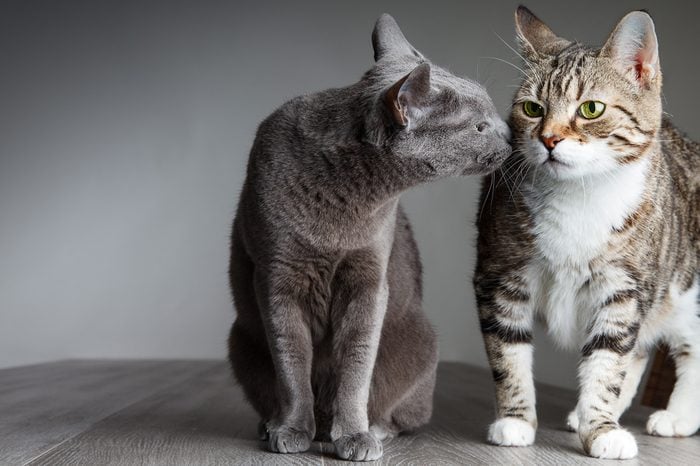
Other cats
Lots of cats love having cat companions, but if yours doesn’t, she might act out by showing fear or aggression. This doesn’t necessarily mean you have to give one up! “Cats show great flexibility in their social behavior,” Vitale says. She suggests separating the cats into different areas of the house and slowly reintroducing them to one another using a method called “Scent, Sight, Touch”:
- Take a toy or blanket from each cat and swap them. Give each cat the other cat’s scent item along with lots of praise and rewards so they associate the smell with good things.
- After doing this a few times, set up a space where the cats will be able to see one another through a physical barrier, like a screen door or gate. Then feed them, so they start to associate positive feelings (food) with the sight of the other cat.
- After a few successful feeding sessions, you can try to introduce the cats without a barrier—distract each cat with toys during their first meeting in the same room, so they have less time to worry.
“If owners go slow and give lots of rewards, many cats can learn to accept a companion cat,” Vitale says.

Baths
Yes, obviously, domestic cats hate baths. While the sight of your angry wet cat may be funny, just like these hilarious cat memes, bathing your kitty is actually avoidable. (Tigers and jaguars, on the other hand, have been known to enjoy a leisurely soak, according to Catster magazine.) The good news is that they don’t usually need to be bathed—regular brushing is enough to remove detached fur and shake out loose dirt. If, however, your kitty rolls around in something noxious that really needs to be removed with soap and water, it’s not likely to be a fun process for anybody, so you want to make it as quick as possible, Catster says. Have everything ready and nearby (cat-specific shampoo, towels, a washcloth for his head, and a pitcher if you don’t have a handheld spray nozzle on your kitchen sink) and wear long rubber gloves to protect yourself from any outbursts. When the deed is done, get your cat as dry as you can with a towel; only use a hairdryer (low heat) if he’s not afraid of it.
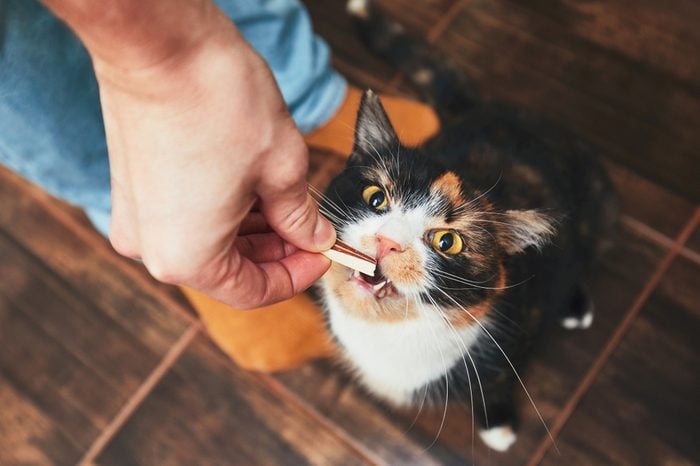
Medication
None of us like taking our pills. To make the process easier, the Lincoln, Nebraska, All Feline Hospital suggests wrapping your cat’s meds inside a piece of cheese or lunchmeat, or in a commercial “pill pocket.” It might work if she’s not a big chewer and really loves the treat. Otherwise, you can grind up the pill and mix it in with whatever food your cat likes most—the trick is that the cat has to eat it all, or she won’t get all the medicine. If your cat sees through these deceptions and refuses to take her medicine, you’ll have to place the pill into her mouth and somehow convince her to swallow it—see detailed instructions for a variety of methods. Keep in mind that if you administer the pill by hand, it might get stuck in the esophagus for a while before making its way to the stomach, which you can usually avoid by squeezing a syringe of water or broth into your cat’s mouth after the pill.

Old food
Lots of cats will turn their noses up at food that’s been sitting out all day while you’re at work. Small, frequent meals throughout the day actually matches their natural feeding behavior more closely, so if you’re able to fill their dishes just a little several times rather than free-feeding a full bowl, Vitale recommends it: “This also gives the cat an event during the day to look forward to, which may help alleviate behavioral issues.” If you won’t be home to dispense multiple meals, Vitale again recommends food puzzles. “This would allow the cat to get the food out at their own pace, give them enrichment to focus on while alone, and help food from sitting out too long,” she says.
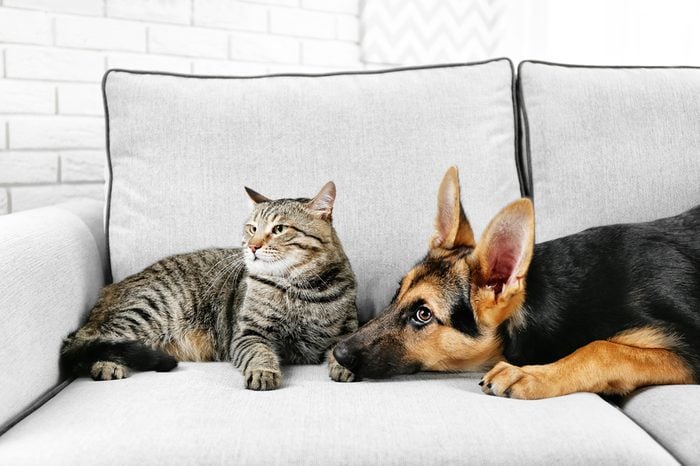
Dog visitors
Dogs can be as scary (or scarier) than kids, and Vitale suggests introducing your cat to both in more-or-less the same manner: “Always allow cats to sniff, then see the dog or child before physical interactions occur.” Make sure, too, that your cat has a safe, accessible place to hide if he’s just not interested in participating. If you follow the right steps, cats can usually be adopted into any kind of home—even ones with dogs and children. Not convinced? These 21 cat adoption photos will melt your heart and have you jumping to bring a kitten into your family.